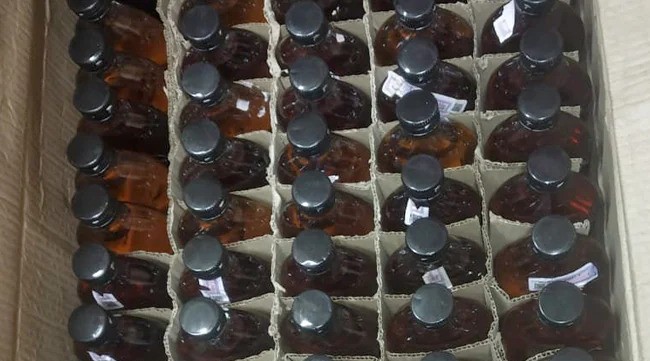New Delhi: Hooch tragedies in India were significantly lower in 2020. According to Lok Sabha data, the year 2017 saw the highest number of hooch tragedies, with 1510 deaths. The number of deaths has been declining each year, with 1365 reported in 2018 and 1296 in 2019 and only 947 deaths in 2020.
The data also highlighted some states such as Jharkhand, Meghalaya, and Delhi have shown a consistent rise in deaths, while Meghalaya and Delhi account for an insignificant rise whereas, Jharkhand has reported a massive rise in hooch tragedies. The data shows that Jharkhand reported 56 deaths in 2018, 115 deaths in 2019, and 139 deaths in 2020. Delhi reported 8 deaths in 2018, 22 deaths in 2019, and 26 deaths in 2020. With 214 deaths from hooch tragedies in 2020 compared to 190 deaths in 2019, Madhya Pradesh had the highest number of such incidents among all the states. When comparing the years 2016 to 2020, the year 2018 had the most fatalities, with 410 deaths.
Similarly, Karnataka also recorded a maximum number of deaths, 268, in 2019 but the state has been able to lower the number of hooch tragedies in 2020, recording 99 deaths that included 98 males and 1 female. The NCRB data shows that MP reports 214 deaths, including 195 males and 19 females. Jharkhand reports 139 deaths, which includes 118 males and 21 females and Delhi records 26 deaths (2020) including only males. Some states such as Bihar, Gujarat, Nagaland, Lakshadweep, and Mizoram have banned liquor. Lakshadweep and Nagaland have reported 0 cases in 2020 whereas Bihar, Gujarat, and Mizoram have different stories. Bihar has banned liquor since 2016 but the state has reported 6 deaths and Gujarat has reported 10 deaths in 2020. Despite the ban, the hooch tragedies have been continuing in both states. In Nalanda, four people died consuming spurious liquor in 2022. The Sunday Guardian approached Nalanda SP Ashok Mishra, but no response was received till the time the article was going to press.
To understand the business of spurious liquor, this correspondent approached Howrah Police Commissioner Praveen Kumar Tripathi who nabbed the prime accused of the hooch tragedy in Bengal that claimed the lives of seven people in Ghusuri, Howrah. He told The Sunday Guardian, “Industrial spirit was used to make spurious liquor, we have now come to know that industrial spirits are illegally sold outside and we are investigating the matter. The people, we have arrested, are stating that they have done it by mistake; they are under custodial trial and we are waiting for the chemical reports. We believe that due to the monetary benefit of Rs 12,000 to Rs 15000, they decided to sell it. They used to buy 600 ml bottles and then mixed industrial spirit and sold it in 200ml bottles. We are investigating the matter.”
Although hooch tragedies in 2021-2022 have not been recorded yet, however, The Sunday Guardian went through various reports of hooch tragedies in Bihar. For instance, in November 2021, 30 people died in Muzaffarpur, including Army Jawan and BSF personnel.
In February 2022, five people died leaving dozens ill from spurious liquor that was sold from a licensed country liquor shop in Mahul town under Aharaula Police Station, Azamgarh. Similarly, in March 2022, 18 people in Madhepura, Bihar died. The correspondent approached local sources in Bihar to understand the spurious liquor operation in the banned state.
The correspondent was told, “There are two ways-smuggling liquor from outside and homemade liquor. In homemade liquor, people use urea to give it a bitter taste so people living in far-flung areas buy them at a cheaper price. Sometimes, liquor is sold in a pouch, that holds half a litre, costing around Rs 30-Rs 50. Also, liquor bottles are smuggled from other states, like UP via Gopalganj and Buxar, and are sold at an inflated rate.”
He further added, “In villages, spurious liquor is often stored in large containers that are hidden in a pit and these containers are interconnected with a pipe from where the local people get their supplies.”
‘Annual hooch tragedies decreasing in India’
- Advertisement -

